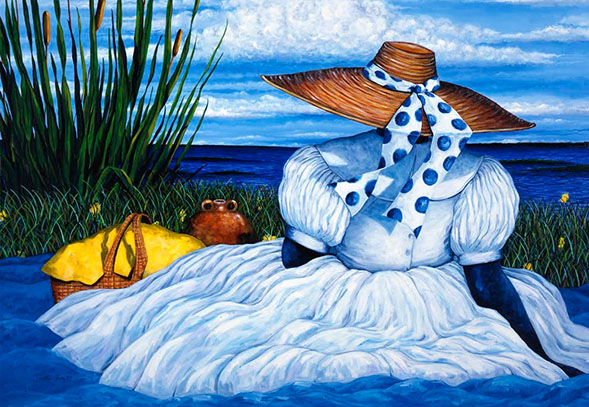Cultural diversity in art is akin to a vibrant tapestry woven from myriad threads, each representing a unique story, tradition, or perspective. This intricate fabric of expression illustrates the rich mosaic of human experience, demonstrating how varying cultures contribute to the collective narrative of our shared existence. Each thread has its own hue and texture, symbolizing the distinctive qualities of the culture it originates from, yet when combined, they create a mesmerizing whole that captivates the senses.
Art serves as a universal language that transcends barriers, translating the complexities of individual identities into a visual and emotional format that can resonate with a global audience. The interplay between different cultural influences often sparks innovation, leading to novel art forms and styles that reflect the melting pot of ideas. Contemporary artists frequently draw inspiration from their own heritage, merging it with global trends to create works that are not only personally significant but also universally relatable.
This phenomenon can be observed in the works of artists such as Ai Weiwei, who utilizes materials and techniques native to his Chinese heritage while engaging with pressing contemporary issues like immigration and freedom of expression. This synthesis between the past and the present denotes a profound dialogue between cultures, inviting viewers to explore the intersections of history, identity, and socio-political themes.
Through cultural diversity, art becomes a prism that refracts light into a spectrum of understanding. Each viewer, shaped by their own experiences, perceives artworks through a unique lens. What might appear as an abstract concept to one could resonate deeply with another individual, revealing shared sentiments of joy, sorrow, struggle, or triumph. This ability of art to evoke multifaceted interpretations exemplifies the depth and breadth of human emotions, reflecting the universal truths that bind us together.
In examining the dimensions of cultural diversity in art, we uncover the vital role it plays in fostering empathy and understanding. Artistic expression can serve as a conduit for cultural exchange, allowing individuals to immerse themselves in experiences outside their own. This exposure cultivates a sense of curiosity and respect for different ways of life, which is paramount in an increasingly globalized world. When people engage with art from diverse backgrounds, they are often prompted to confront their own biases and assumptions, creating opportunities for dialogue and connection.
Moreover, the impact of cultural diversity on the artistic landscape is not limited to mere aesthetic appreciation. It also influences the methodologies and practices inherent in various art forms. Traditional crafts, for instance, have been enriched through cross-cultural exchanges, as artisans incorporate techniques and materials from different heritages. The resultant fusion not only revitalizes age-old practices but also ensures the continued relevance of these art forms in a modern context.
Furthermore, cultural diversity in art has the power to challenge dominant narratives and provoke critical thought. Works that foreground underrepresented voices often disrupt the status quo, compelling audiences to re-evaluate historical contexts and the power dynamics that shape societies. This aspect of art serves as a mirror reflecting societal inequities, and as a hammer shaping new paradigms of understanding and acceptance.
Art festivals and collaborative projects that celebrate cultural diversity proliferate across the globe, providing platforms for artists to showcase their unique perspectives while simultaneously fostering a spirit of community. These events serve as a celebration of differences, highlighting the fact that diversity is not merely an asset to be tolerated, but a treasure to be embraced. Through dance, theater, visual arts, and music, communities come together to create a rich anthology of cultural expression, each contribution playing a crucial role in the larger narrative.
The interplay between cultural identity and artistic expression can be further understood through the concept of hybridity – a blending of cultural elements that gives rise to new forms of art. Contemporary art has witnessed an embrace of hybrid practices, where artists meld traditional techniques with modern sensibilities. This convergence not only reflects their multifaceted identities but also signifies the ongoing evolution of artistic expression itself.
The unique appeal of cultural diversity in art lies not only in its ability to represent a myriad of identities but also in its capacity to inspire future generations. Young artists, influenced by the richness of diverse traditions while also navigating their own cultural identities, are likely to continue this trajectory of exploration. They wield the brush, the camera, and the chisel as instruments for fostering understanding and sparking change, pushing the boundaries of what art can convey.
In conclusion, cultural diversity in art is a dynamic and essential element of our global heritage. The threads of different cultures intertwine to create a vibrant tapestry, offering insights into the human condition and fostering connections across boundaries. Embracing this diversity not only enriches our artistic experiences but also cultivates an inclusive society where multiple narratives can coalesce into a harmonious whole. Each artwork, an invitation to engage, challenges us to go beyond surface interpretations and delve into the depths of what it means to be human in a world brimming with contrast, complexity, and beauty. As we explore the cultural dimensions of art, we are reminded that our differences are not divisions but rather a fertile ground for innovation and understanding, paving the way for a future resplendent with creativity and compassion.
